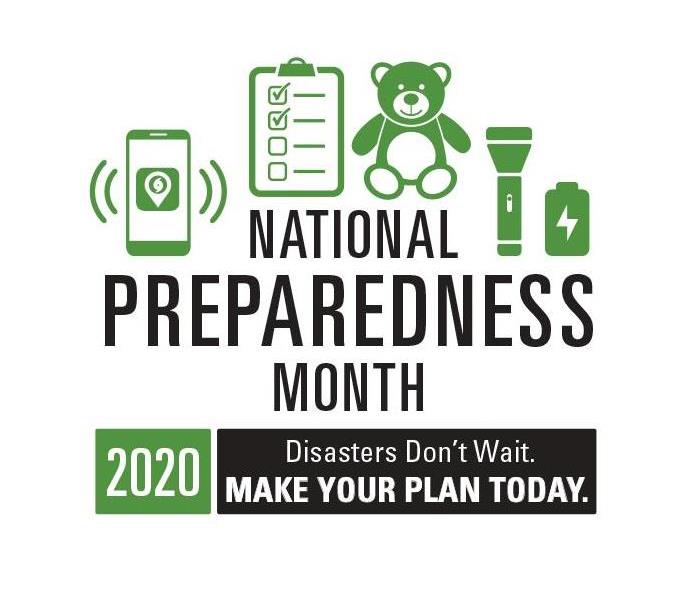4 Steps to Creating Your Family Emergency Plan
9/1/2020 (Permalink)
At SERVPRO of West Seneca/Lancaster, we help families deal with disasters every single day.
What’s the key to mitigating damage and distress stemming from a disaster? Being prepared. We’re here to help you do just that.
September is National Preparedness Month, and the heart of being prepared is making a plan. You never know when disaster will strike, so it’s vital that you and your family know what to do when something unimaginable takes place. Do you know where to go? How you’ll contact each other if you’re separated? How you’ll reconnect if you can’t get into contact with each other?
If the answers to these questions aren’t an emphatic “yes,” then you need to make a plan. We’ll go over the basics and link you to the best resources from Ready.gov to get started. While making an emergency plan may sound daunting, it really boils down to four steps.
Ask questions and gather information.
First things first, let’s take stock of where you’re at. Ask yourself the following questions:
- How will I receive emergency alerts and warnings? Often, these come directly to your mobile device as WEAs (Wireless Emergency Alerts).
- What is my shelter plan? Are you prepared to shelter at home for an extended period of time?
- What is my evacuation route? Do you know where to go if you need to evacuate? If you have pets, do you know if they can come with you?
- What is my family/household communication plan? Do you know where to meet if you’re separated when disaster strikes?
- Do I need to update my emergency preparedness kit? Is it easily accessible and well maintained?
- Have I updated my plans to account for the latest guidelines put out by the Centers for Disease Control (CDC) related to coronavirus?
The answers to these questions should guide your next move. Often, we think we’re more prepared than we actually are – make sure you ask yourself a few “what if” questions to really check your preparedness. What if cell phone service is disrupted? What if your family isn’t together when disaster strikes? Knowing what to do in these types of contingencies is important.
Consider your household’s specific needs.
Your plan must be more than thorough – it has to be workable with your family. Everyone has different needs and different strengths that will affect how your plan should be executed. You’ll have to make arrangements for the very old, very young, those with medical needs or disabilities, and your pets. Think about the following as you make your plan:
- Different ages of members within your household
- Responsibilities for assisting others
- Locations frequented
- Dietary needs
- Medical needs including prescriptions and equipment
- Disabilities or access and functional needs including devices and equipment
- Languages spoken
- Cultural and religious considerations
- Pets or service animals
- Households with school-aged children
Sit down and fill out your plan.
Ready.gov has made it simple to actually fill your plan out once you have all of the relevant information gathered – just download their template. Feel free to add any information you think is necessary for your family to be prepared.
Communicate and practice.
Having a plan is great, but your family needs to be ready to put it into action. Call a family meeting to go over the plan with everyone involved in detail. Print out copies that everyone can carry with them when they’re out of the home. Finally, practice what you can! An emergency drill might seem like a weird way to spend your next family evening, but practice makes perfect.




 24/7 Emergency Service
24/7 Emergency Service